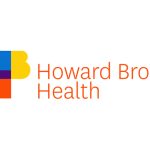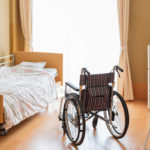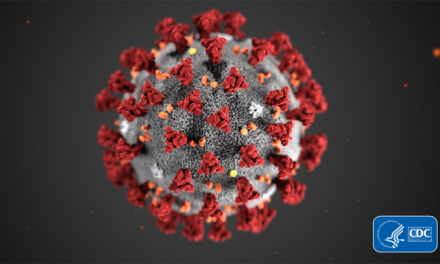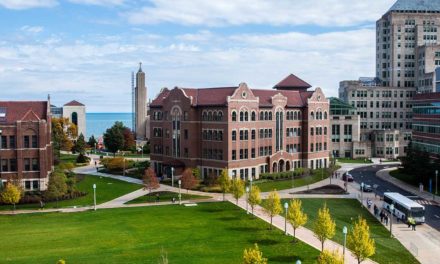
Pandemic Health Worker Program rooted in community health

Gov. JB Pritzker last month announced the Pandemic Health Worker Program, an effort to digitally connect with Illinoisans experiencing COVID-19 symptoms that don’t need hospitalization.
The program is split up in three regions, with Advocate Aurora Health covering the Chicago region and OSF HealthCare in central Illinois. The Southern Illinois University School of Medicine is covering the 66 most southern counties, including the areas around Springfield, Decatur and Quincy.
Dr. Tracey Smith, the executive Director of SIU Medicine’s Office of Community Initiatives and Complex Care, created the community health worker model that helped shape the program and is advising the school as it rolls out the program, which launched last month in the Springfield area.
Smith spoke to Health News Illinois Wednesday afternoon about the program, the importance of community outreach during the pandemic and how this work could continue in a post-pandemic Illinois.
Read more below.
HNI: Tell me more about the Pandemic Health Worker Program?
TS: So the Pandemic Health Worker Program is a program that is really based on a community health worker model. The community health worker model is one that connects an individual that has strong relationships within the community or has worked for a long time in a community or lives in a community and creates the connection between healthcare settings, community settings and other service agencies.
The Pandemic Health Worker Model is really just a growth off of that, and it addresses particular needs that will come up specifically around the time when the pandemic is occurring. So we know that during this pandemic period, individuals may struggle with things that they had not struggled with previously. So whether that be things that affect daily life like housing, food, unemployment issues. It could be things like, you have more stress or maybe you had a mental health struggle before and it’s worse, because of the stress of this period of time or the crisis that you’re set into. Or it could be then that you’ve also had a health problem prior. And so now maybe the stress is making that health problem worse, whether diabetes or hypertension. Or you are exposed or have COVID, and so then you’re going to have specific problems related to that. So the pandemic health worker is a person who can help with any of those needs by helping to connect you back into community services, by helping you connect to healthcare services, and making that connection very smooth and easy, versus trying to have to figure multiple stuff out on your own. That can be often difficult in a period when it’s not a crisis.
HNI: Why does this model work for the pandemic?
TS: So we’ve been using community health workers at SIU School of Medicine for over five years now. And if you look across the state, there’s a lot of movement towards using community health workers. There’s a lot of literature that supports, in situations where there needs to be a relationship built between individuals in the community and the healthcare setting and when things are complex and difficult to navigate, that community health workers have a very significant, positive effect. So when you go back to literature, you’ll see that community health workers have been used in many third-world countries, and in many other countries to do this type of work. And we were, in fact, using them here in the United States and in Illinois, specifically in Springfield, to do this type of work in a non-pandemic state. So it was only natural that you would flow into a workforce that would address specific pandemic means.
HNI: How many people have you reached so far?
TS: So we have 71 clients who have come through the program at this time… We started with this in Springfield, so we are now just starting to get to other locations like Decatur, Carbondale and other places. We’re still in that growth mode.
HNI: What’s been the response so far?
TS: We have a lot of people just trying to figure out how to get connected to services. We also have a group of individuals who need some support in a crisis situation in terms of behavioral health. We’ve also seen a lot of people who have some chronic conditions who are struggling to stabilize them at home and they’re trying to go into a doctor’s office or the emergency department. They’re needing some assistance on how to understand and navigate the new healthcare system, you know, with telehealth, et cetera. So it’s about 20 percent of our calls are needing some assistance with behavioral health-related needs. A little bit over 40 percent of those calls is needing some help with some of their high-risk medical needs. And that could be that they’re COVID-positive or they have family that is COVID-positive and they’re struggling with how to help them, or other conditions that they need to get in for care. And then about 30 percent of people have needed some assistance with basic things like food, transportation, cleaning supplies, some children’s activities now that the kids are home. Ways to reduce that stress by having things to have their kids do. It’s kind of a mixture of things that we’re seeing.
HNI: What communities are you targeting?
TS: So it’s a process that we’ve rolled out. We started in the Springfield area and are now working to grow this in the Decatur, Carbondale and Quincy areas. And we’re working with a partner of ours, Southern Illinois Healthcare Foundation, in the St. Clair (County) area. And then eventually, we can continue to expand this and cover up to 65 counties in the central and southern Illinois area, the counties that we typically provide services to as SIU.
HNI: How long do you expect the rollout to take?
TS: We’ve laid out a plan over the next six months for growth.
HNI: How many workers are part of the program?
TS: So we’re looking to have around 44 employees in the program. Currently, we have right around 10 employees, so we have a quarter of the employees in place for the rollout process.
HNI: How do you connect with those harder-to-reach residents who live in the more rural areas of southern Illinois?
TS: So we have a lot of partners. That’s one of the reasons that SIU is kind of leading the effort in the southern and central areas. We partner a lot with the local health departments, with the critical access hospitals in the area, with many community agencies in the area. We have different partners in each area that we go to and then they are able to help us to connect in those areas too. And they can make sure that the information is getting out there. So it’s really about close partnerships with folks in each one of those counties. And SIU, for a number of years, has really been building those relationships within counties. So in a situation like this, we’re able to call upon those partners for assistance getting information back to us to help us develop the programs that are needed in those rural areas.
HNI: What can lawmakers do to support this work?
TS: It’s really exciting that our governor and his team have really taken on the pandemic health worker direction. I think it’s really innovative and creative, and I’m really excited about that. We were in the process of looking at how we move into having a billing system for community health work across the state prior to the pandemic hitting, so allowing us to continue to have those conversations and continue to grow out of this effort as we go through the recovery state… really have open conversations about these unique opportunities. To have different levels of people to work in the community and do the work. So I think to just continue to be open to those conversations, asking for a lot of input and looking at how to utilize everybody that’s coming on-board during the COVID crisis situation, and ways to maintain their involvement in the community and their involvement as we move toward recovery.









